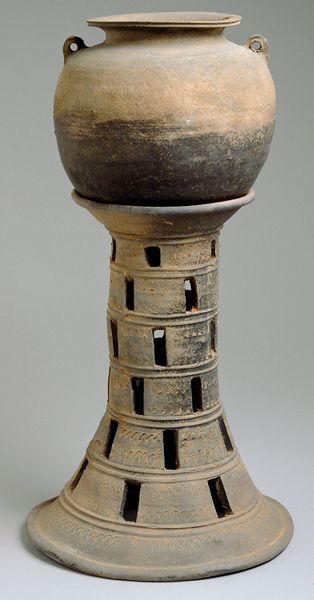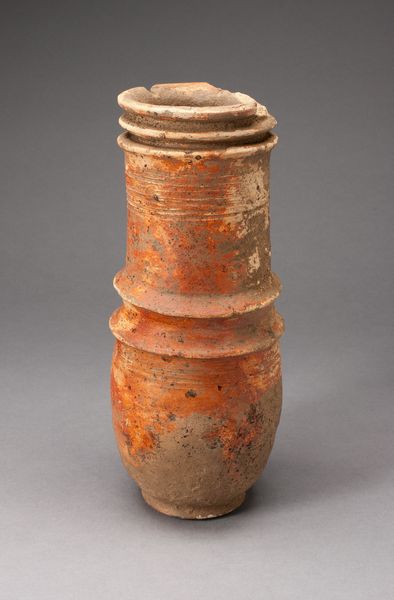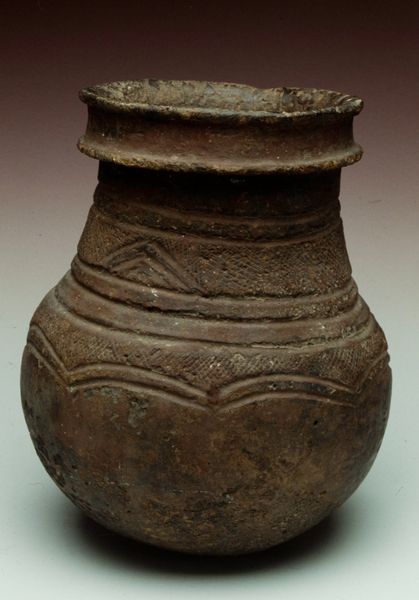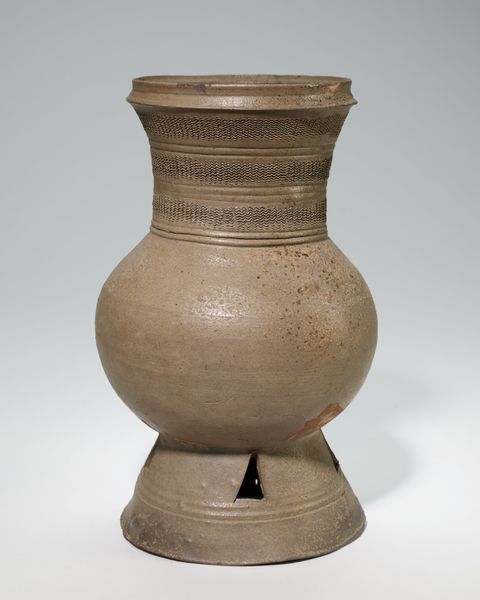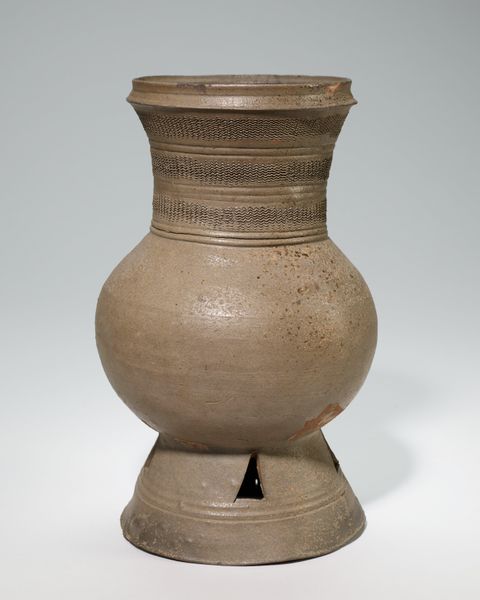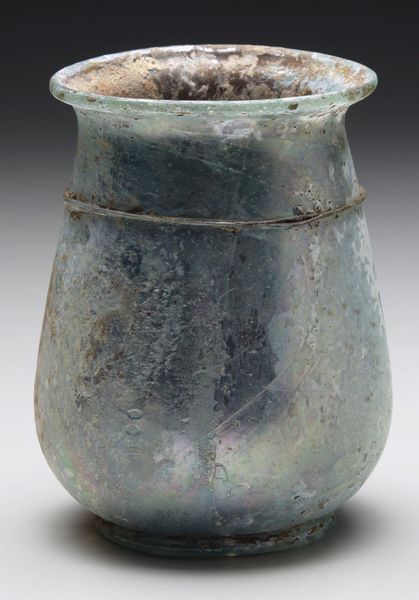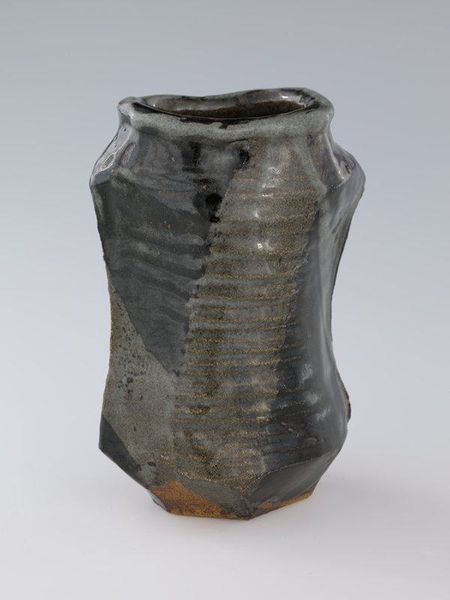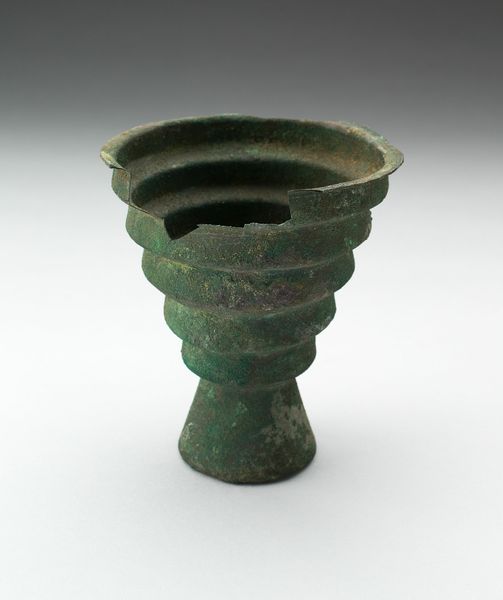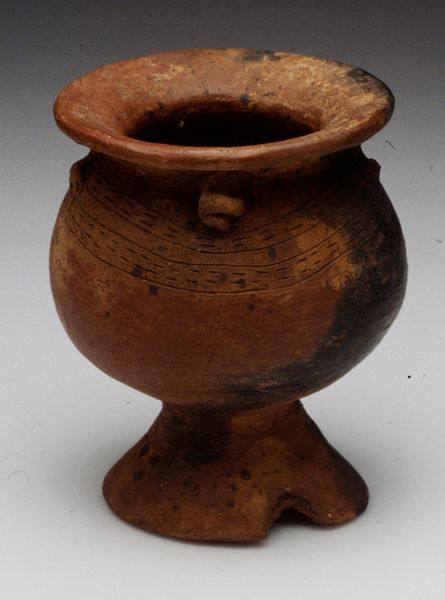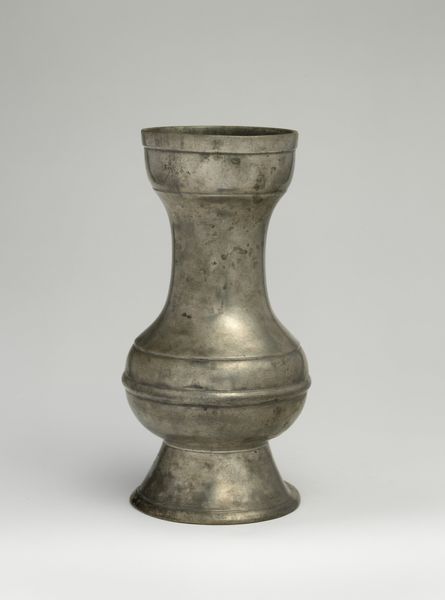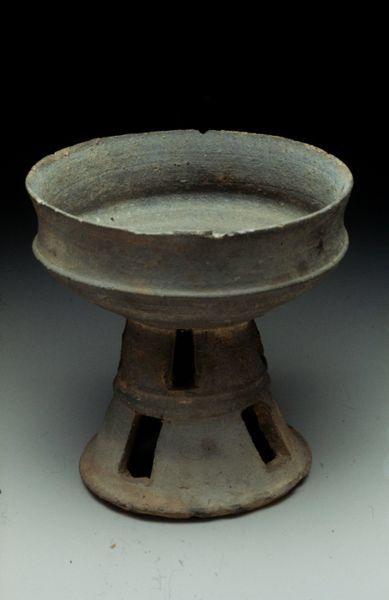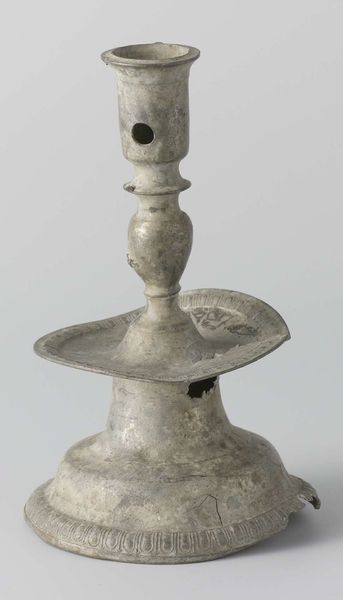
ceramic, earthenware, sculpture
#
ceramic
#
11_renaissance
#
earthenware
#
sculpture
#
ceramic
Dimensions: height 4.7 cm, diameter 3.2 cm
Copyright: Rijks Museum: Open Domain
Curator: Before us is a fragment of a ceramic five-piece candlestick, likely dating from around 1590 to 1596. It's an earthenware piece, part of the Rijksmuseum's collection. Editor: My first impression is that of a stoic relic. The material looks aged and worn, bearing a quiet gravitas that comes with time. The neutral colour adds to its serious demeanor. Curator: Candlesticks during this period, especially those elaborate enough to have multiple arms, were common features in wealthy households or religious settings, used both functionally and symbolically to display status and wealth. Editor: Symbolically? Given the tumultuous socio-political context of that time, I wonder if such displays of wealth also speak to broader power dynamics and the church’s authority? Were they purely decorative or were they imbued with statements of allegiance, particularly with the rise of Reformation? Curator: Absolutely. In the Netherlands, objects like these were directly connected to the patrons who commissioned them, be it churches or rich merchants. The material itself, earthenware, while not as valuable as silver or gold, still represented considerable expense and commissioning power. The choice to use an object such as this speaks to a clear cultural milieu. Editor: Do we know anything about the artisan? The existing literature I've consulted has not established that to be the case. Curator: No records exist connecting this artifact to an artist—such details are not often preserved in cases like these. In absence of any hard data on the authorship or production conditions, there is much that must be extrapolated in broader sociohistorical and economical currents. Editor: That’s a common story throughout art history—isn't it? So many nameless hands responsible for the material culture of the past. This emphasizes, once again, who is and isn't documented by institutions like the church or a guild. It raises questions, for me, of social justice. Curator: Indeed. And that very silence makes our work—and our attentiveness—more meaningful, hopefully sparking conversation, even centuries later. Editor: Precisely. Looking closely, the craftsmanship speaks volumes despite the anonymity. I'm struck by how something incomplete can provoke a richer reflection of the past.
Comments
No comments
Be the first to comment and join the conversation on the ultimate creative platform.
